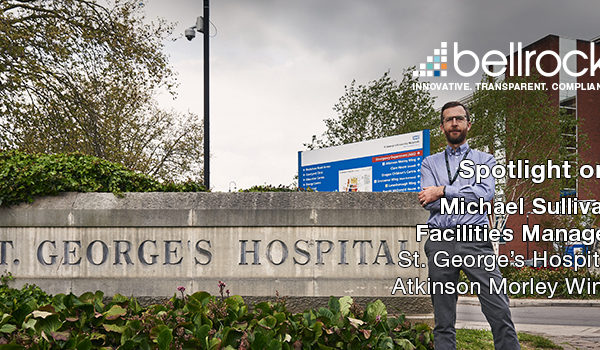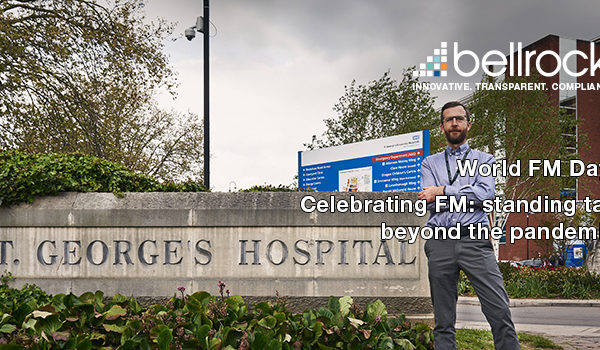This guidance is designed to support non-healthcare environments, for healthcare environments please refer to the Government Health Technical Memorandum here.
As we turn our attention to recommissioning our estate, one of the early and key considerations will be on how do we make it clean and ready to re-inhabit. There will be an element of nervousness from your colleagues and visitors as they come to site, so one of the key priorities will be to provide reassurance, both upon re-opening and then on an on-going basis.
There are three key considerations:
- What do we need to do in preparation for re-occupation?
- What are the ongoing considerations and actions to ensure the workplace remains clean and safe?
- What happens if there is a confirmed or suspected outbreak within the workplace?
Background to the virus
First, is it important to know a little about the virus and how it spreads. Our primary objective is to help you get back up and running in the safest way possible by recommending some of the practical things you can implement to have a direct impact on the potential infection transmission rate in your building.
The virus, believed to be from the same strain as the SARS virus, has presented itself as a respiratory illness with varying levels of severity from minor symptoms to death. As with any virus, the transmission can be rapid, with person to person contact enabling it to be spread at pace. Any form of infection is created by exposure to harmful micro-organisms such as bacteria, fungi, viruses and internal parasites.
Coronavirus is an airborne virus, spread in a similar way to colds and the flu. It is incredibly contagious and is spread through contact with anything the virus is on as well as infected breath, coughs or sneezes. This means that anyone who is infected can pass it on to any surface or person they breathe on or touch.
We can help and contribute to the prevention and reduce the risk by applying good standard precautionary practices such as the following:
- Achieving good hand hygiene
- Correct use of personal protective equipment (PPE) such as gloves, aprons, masks etc.
- Managing sharps
- Disposing of waste appropriately
- Accident management
- Managing spillages of blood and body fluids
- Achieving and maintaining a clean environment
The following are the four main routes of transmission:
- Airborne Transmission: Transmitted through the air; coughing, sneezing, or contaminated dusts can result in respiratory discharge into the air
- Faecal-Oral Transmission: Transmission through touch from the lack of proper hygiene habits after using the toilet and the transferring of micro-organisms to touch-points that could be passed onto other individuals touching the same point.
- Direct Contact Transmission: Transmission occurs when there is physical contact between an infected person and a susceptible person and the transfer of micro-organisms from anything that is touched.
- Blood and Body Fluid Transmission: Transmission through the penetration of skin from an injury or a contaminated needle, or other sharp objects resulting in the breaking of the skin.
Ref: BICSc Infection Control Awareness
Pre-occupation of the Workplace
As we start to think about re-occupying our workplaces, we need to consider what the new normal will look like. Helping your workforce feel safe when they return to work shouldn’t be underestimated. This will require careful planning and communication to prior to opening.
The following steps should be considered as you formulate your re-occupancy plan:
Re-opening deep clean
Whilst your workplace has been unoccupied for several weeks, it is unlikely to have any exposure to the virus. However, for peace of mind, a ‘deep clean’ of the workplace should be considered.
In order to effectively undertake a deep clean and to maintain ongoing high cleaning standards, a clear desk policy should be strictly adhered to. Due to the quick departure of our workplaces as the lock-down took hold, personal belongings will have been left. During the deep clean, it is recommended that personal belongs are carefully bagged up and left under the desk. As employees return to work personal belongings should be taken home.
Additional storage should be considered to enable employees to store paperwork away from their desks enabling a clear desk policy.
Property disinfection
Complementary to a pre-opening deep clean, consideration should be given to further disinfection methods such as Ultra-Low Volume (ULV) disinfectant fogging. The fogging equipment generates a fog or mist formed of ULV droplets. Through vaporisation, airborne and surface-based pathogens are destroyed, so there is no need to move furniture or equipment around for the treatment to work. Fogging is probably the quickest and easiest way to disinfect large areas with minimum disruption to both you and your business.
Enhance hygiene schedule
Engage your cleaning provider or internal team to undertake a complete review of your cleaning needs and risks to establish the most effective enhanced cleaning programme to control any virus spread. This should focus on touch points and high traffic areas incorporating a risk sanitisation programme.
Using a simple RAG system, analyse your buildings usage in order to develop an enhanced sanitisation programme. As an example, the following should be considered: Light switches, door/window locks, door handles, sides/work surfaces, equipment handles, appliances, handrails, telephones, keyboards, buttons, taps, tables/desks and chairs, vertical surfaces.
You should then consider additional scheduled cleans of the identified touch-points throughout the day as single point sanitisation only lasts until the next person uses the area.
Correct choice of chemical
There are numerous manufacturers and suppliers within the industry that can help you to source the right chemical products to aid your requirements during an infection outbreak. Dependant on the type of building you work within, you may need to cease using your current chosen cleaning product and use a product more suited for the type of infection you are dealing with.
Manufacturers will provide specific guidance on what type of disinfectants are the most effective and advise on dilution rates and contact times for the type of infection you are required to deal with. It is important to liaise with your approved suppliers and seek professional guidance. Training may be required for any new products and operatives should undergo training before using any new product.
Communications to staff
Communicate to staff about the changes to the workplace, explaining new ways of working including clear desk policies and the reasons. Describe the measures taken to ensure the workplace is clean and safe to return to and the ongoing enhanced hygiene schedule and sanitisation programme. Continue to communicate the importance of hygiene measures such as hand washing and sanitising.
Ongoing Considerations
There are several ongoing considerations that could reduce risk and protect your workforce from the virus however further financial investment from the business may be required to implement.
Sensor dispensers
To reduce the number of high-risk touch-points in your buildings, you might consider installing fully automatic dispensers, removing the need for physical contact. Your employees simply place their hands under the dispenser and a measured dose of gel, liquid soap or sanitiser is dispensed touch free.
Air care
An air care solution will enhance the air quality of your workspace by eliminating odours and removing harmful germs, allergens and other irritants. Bathroom air purifier units remove up to 99.9% of germs, including airborne flu to help protect the health of your staff.
Shut down of electric hand dryers
The shut-down of electric hand driers and replacement with paper product dispensers. Scientists have issued concerns airstreams (i.e. hand driers) could spread the virus from users who have not been 100% successful in removing the virus by hand washing.
Whilst the WHO currently state hand dryers are acceptable you may want to temporarily switch to paper products to avoid any risk of further spreading.
Covid-19 testing
SARS-Cov-2 swab tests have been developed to confirm the presence of the virus on environmental surfaces, such as door handles, work surfaces, ventilation system grilles and filters, over a 25cm2 area, using a sterile swab pre-moistened with phosphate-buffered saline.
Changes/availability of consumables
Source or advise of stock issues for consumables that are likely to have an increased demand such as desk cleaning wipes. Review and advise on additional hand sanitiser, surface disinfectant wipes and tissues available in workspace, cafeterias, meeting rooms, elevator lobbies and high traffic areas and other common areas.
Confirmed or suspected outbreaks of the virus in the workplace
It is likely that at some point you will have either a confirmed or suspected case of the virus within your workplace, it is important to have an agreed process in place for managing your response so that you don’t unnecessarily alarm your workforce when this occurs.
The British Institute of Cleaning Science has issued a Standard Operating Procedure for the Outbreak Decontamination Cleaning. The standard provides a method for cleaning and decontamination of a confirmed or suspected outbreak within a safe and controlled scope of works without danger to people, fixtures and fittings. The procedure outlines the recommended equipment, H&S considerations and method of work.
Initial actions to be taken:
- Where possible secure area for 72 hours before decontamination cleaning takes place
- Carry out a dynamic risk assessment on arrival at the work area and place warning signs
- Carry out the Point of Work risk assessment (this is specific to the task taking place and the area of contamination) from outside of the contaminated area to establish potential hazards and risks
- Check all PPE as per COSHH and risk assessment is available
- Confirm all necessary colour-coded equipment is available and fit for purpose
- Demonstrate an understanding of the standard operating procedure or method statement, risk assessment, COSHH assessment
- Ventilate the preparation area, either open a window or a door where possible
Further guidance;
The British Institute of Cleaning Science: Outbreak decontamination cleaning SOP
The British Institute of Cleaning Science: BICSc Infection Control Awareness
Public Health England Guidance: Covid-19 – Cleaning in non-healthcare settings
Key Points
- Preparing for a deep clean: Clear desk policies should be implemented if not already in place, with personal belongings being bagged up and stored, ready to be taken home by individuals
- Property disinfection: Consider alternative methods of complete disinfection such as fogging in addition to your deep clean regime
- Implement an enhanced hygiene schedule: Identify site touch points and high traffic areas for additional scheduled cleans as the building becomes occupied
- Use the correct chemicals: It is important to liaise with your approved suppliers and seek professional guidance on what type of disinfectants are the most effective and advise on dilution rates and contact times.
- Communications to staff: Ensure that employees are aware of new guidelines and policies for returning to work around personal spaces and enhanced cleaning schedules, outlining measures in place to ensure their safety.
How can Bellrock help?
Our on-site managed teams will be happy to provide guidance on increased cleaning regimes, whilst our Supply Chain management team can also recommend specialist cleaning companies or appropriate levels of increased cleaning to facilitate the return to reoccupation of your estate.
Our service charge team can work with you on managing budget landlord discussions on any service charge budget disputes or improvements in service levels that you consider necessary.
Mike Smart | MD Workplace & Compliance Services
mike.smart@bellrockgroup.co.uk
+44 (0)7833 050 564







